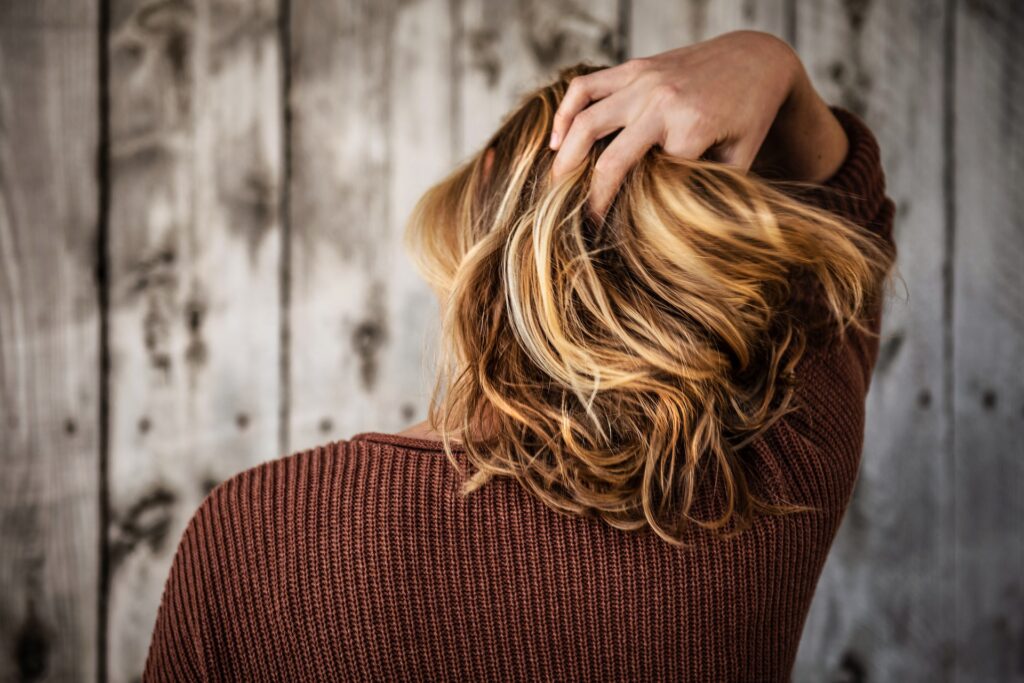Hair is often considered a symbol of beauty, strength, and femininity. For many women, it’s an important part of their identity. However, the reality is that hair loss is a very common, often not publicly discussed, concern among women, affecting self-esteem and overall well-being. With that in mind, today we’re hoping to demystify some of the possible causes of female hair loss, and explore some potential solutions.
The Root Causes Of Hair Loss In Women
Hair loss can be a result of various factors, and understanding the root causes is the first step in resolving the issue. Here are some common causes of hair loss:
1. Genetics: Your family tree plays a significant role. If your close relatives have experienced hair loss, you may be genetically prone to it.
2. Ageing: As we age, changes in hormone levels and reduced hair growth cycles can lead to thinning hair.
3. Vitamin Deficiencies: A lack of essential vitamins and minerals can weaken hair, making it more brittle and susceptible to loss.
4. Hormonal Changes: Hormones, particularly estrogen and progesterone, play a crucial role in maintaining hair quality. Changes in hormone levels during life stages like perimenopause, menopause, and post-menopause can lead to hair loss.
5. Illness: Certain medical conditions and treatments, such as chemotherapy, can result in hair loss. In recent times, Covid-19 has also become a leading cause of hair loss.
6. Stress: Emotional and physical stress can trigger a type of hair loss called telogen effluvium (TE). This condition disrupts the natural hair growth cycle, causing slow growth and excessive shedding.

How Female Hair Loss Differs From Male Pattern Baldness
It’s essential to note that female hair loss differs significantly from the male pattern baldness often seen in men. Instead of a receding hairline or bald spots, women typically experience a more diffused thinning across the scalp, which is why sometimes female hair loss treatments can be different in nature. This pattern usually emerges later in life, often during pre-menopause.
The Hormonal Connection
Hormones are the invisible conductors of many bodily processes, including hair growth. Estrogen and progesterone, in particular, play a significant role in maintaining hair quality. Hair loss is relatively more prevalent in life stages like perimenopause, menopause, and post-menopause, primarily due to declining hormone levels.
Managing Stress-Related Hair Loss
Stress, especially for women, can manifest as hair loss. Telogen effluvium (TE), a condition characterized by slow hair growth and excessive shedding, is often a result of severe stress. Thankfully, targeted treatments are available to address this type of hair loss.
Exploring Treatment Options
Female pattern hair loss can indeed be a disconcerting condition. Fortunately, several treatment methods can help combat this issue. These are:
- Mineral and Vitamin Supplements: As certain deficiencies in minerals and vitamins, like iron, vitamin B12, or Vitamin D, may result in hair loss, your health care provider may recommend supplements if lab tests reveal deficiencies, typically after a complete health check-up.
- Topical Minoxidil: This medication can help in the growth and thickness of hair. It is applied directly to the scalp and is known to delay or prevent hair loss in some women.
- Hair Transplant Surgery: In this procedure, a surgeon moves healthy hair follicles from an area with thick hair growth to balding areas of the scalp. It’s important to be aware of the potential side effects related to the procedure, however.
- Fortified Shampoos: These specialised cleansers are formulated with active ingredients like ketoconazole, biotin, or caffeine. When used as part of a daily hair growth product regime, they may help create optimal scalp conditions to support new hair growth while strengthening existing follicles.
- Scalp Micropigmentation: This is a non-surgical method which involves embedding organic pigments into the scalp in a process that is similar to getting a tattoo. It creates an illusion of fuller hair.
- Laser Therapy: This uses light energy to promote the growth of new hairs by improving blood flow to hair follicles.
- PRP Treatment: Platelet-Rich Plasma therapy involves injecting platelets from the patient’s own blood directly into the scalp to stimulate hair growth.
- Spironolactone: This medication is used to treat hair loss caused by androgenic alopecia, a hormonal condition.
- Anthralin Ointment or Creams: Traditionally used for the treatment of psoriasis, anthralin is also helpful in growing new hair when applied to the skin.
Always discuss with your GP or a specialist trichologist to understand the cause of your hair loss and identify the most suitable treatment. Each one of these treatments has different efficacies and side effects, so it’s important to locate the most suitable option for your individual needs. It should be noted that sadly not every treatment works for everyone.

Why Early Intervention Matters
Early intervention is crucial when it comes to hair loss. Over time, hair quality deteriorates, and individual strands become finer before follicles start becoming smaller. Seeking help sooner rather than later improves the chances of regaining lost hair.
Recognising The Signs
How can you tell if it’s time to seek help for your hair loss? Keep an eye out for increased and visible hair falls on brushes, floors, in the shower, on pillows, or in the sink. A widening part and a visible scalp are also signs to look out for. If you notice these symptoms, it’s time to consult a healthcare professional.
*While this article provides a comprehensive overview of various tools, treatments, and strategies employed in addressing hairline changes and hair loss, it is intended for informational purposes only. The effectiveness of these treatments can vary significantly from person to person, as each individual’s hair loss journey is unique and influenced by a myriad of factors, including but not limited to, genetics, lifestyle choices, underlying medical conditions, and hormonal balance.
Moreover, the costs of these treatments can differ considerably based on geographical location, the choice of clinic or salon, and the complexity of the individual’s case. Therefore, the prices mentioned within the article should be regarded as ballpark figures, not absolute standards.
Readers are strongly encouraged to consult with healthcare professionals such as dermatologists, trichologists, or hair specialists before incorporating any new treatment into their routines. This ensures that they receive the most accurate information tailored to their specific circumstances.*





